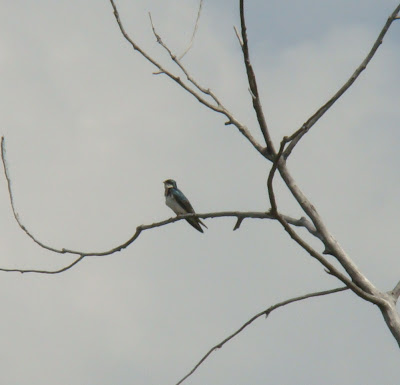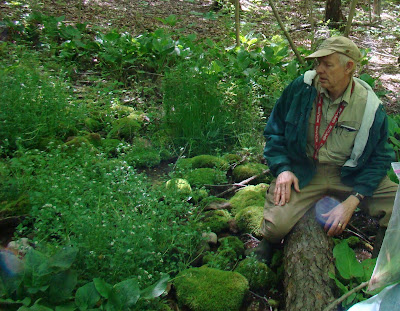Late May and early June serves up a special temptation for gardeners, exotic scents. These heavenly fragrances can make one long to forget the issues surrounding invasive species, and give into to their spell.
The heavy perfume of a Japanese Honeysuckle, Lonicera japonica begs one to pull a flower from the vine to taste its sweet nectar. No wonder hummingbirds and moths are attracted to this non-native. It smells absolutely...de-vine. Who knew it would try to eat the landscapes of southern Ohio with the vigor of a Kudzu? It is listed as an noxious weed in Texas, Illinois and Virginia. You know it is a problem if Texas doesn't even want it.
 |
| A Cloudless Sulphur nectars on Dame's Rocket at Magee Marsh. |
Multiflora Rose, Rosa multifora is an insidious devil in Ohio. Once promoted by the U.S. Soil Conservation service as a hedge row for erosion control and living fences, this fragrant beauty has worn out her welcome. Shown here at Magee Marsh, it rapidly spreads by the fruit-loving-bird vector. Once believed to be sterile, the avian species have proven otherwise. But even as I loath its thorns and the tangles on the landscape, I can barely help myself when I smell its sweet perfume. Oh devil, your sweet smell belies the terror you inflict upon property managers.
Is it any wonder that the most noxious of invasive plants smell the sweetest? Perhaps, as put forth in Michael Pollan's book The Botany of Desire, these plants are cultivating us. Do they use their beauty and sweet scents to entice gardeners to grow the very plants we will curse and attempt to eradicate in the future?
Ah, perhaps we smell a successful ploy for self-preservation? Maybe these invasive species should make one wonder who is cultivating whom?






























+Jim+Bissell.JPG)
+Poss.+App+Azure.JPG)




.JPG)













